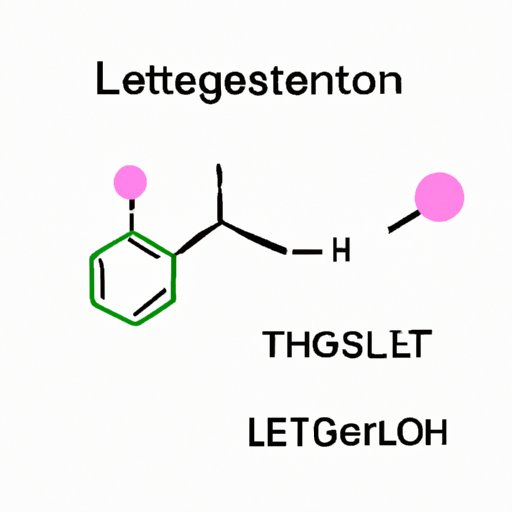Understanding Which Cells Produce Testosterone
Testosterone plays a vital role in the development of male sexual characteristics, including deepening of the voice, growth of facial hair, and increased muscle mass. Although the testes produce testosterone, the cells responsible for this hormone’s production are not widely known. This article aims to explore which cells produce testosterone in the human body and how they function in maintaining healthy hormone levels.
Inside the Testes: A Closer Look at Testosterone-Producing Cells
Testosterone is a steroid hormone that belongs to the androgen group. It plays a crucial role in the development of secondary male sexual characteristics, sperm production, and maintaining bone density. The testes are the primary source of testosterone production in males, including both the fetal and adult stages. The testes’ seminiferous tubules contain cells that produce gametes, while the interstitial or Leydig cells produce testosterone.
The Role of Leydig Cells in Testosterone Production
Leydig cells are found in the connective tissues surrounding the seminiferous tubules and are responsible for producing testosterone. They secrete the hormone in response to luteinizing hormone (LH), which is produced by the pituitary gland. LH stimulates the Leydig cells to produce testosterone, which then enters the bloodstream and exerts its effects on the body.
The amount of testosterone released by the Leydig cells depends on the concentration of LH and the number of active Leydig cells. The production of testosterone from Leydig cells is regulated by the hypothalamic-pituitary-gonadal (HPG) axis, a complex feedback loop that maintains hormone balance in the body.
Understanding the Mechanisms of Testosterone Production in the Human Body
The hypothalamic-pituitary-gonadal (HPG) axis controls testosterone production in the body. The hypothalamus, a small area located deep within the brain, releases gonadotrophin-releasing hormone (GnRH) that then signals the pituitary gland to secrete LH and follicle-stimulating hormone (FSH). LH stimulates the Leydig cells to produce testosterone, while FSH stimulates the Sertoli cells, which play a role in sperm production.
The HPG axis also has a vital feedback mechanism to regulate testosterone levels. If testosterone levels in the bloodstream rise too high, the hypothalamus and pituitary gland release less GnRH, LH, and FSH. Conversely, if testosterone levels are too low, more GnRH, LH, and FSH are produced, resulting in increased testosterone production from the Leydig cells.
Hormonal Health: Exploring the Function of Sertoli Cells in Testosterone Production
Sertoli cells, also known as nurse cells, are found within the seminiferous tubules of the testes. They help regulate the spermatogenic process and maintain hormone levels in the testes. Sertoli cells play a critical role in the production of testosterone by providing necessary support to Leydig cells during spermatogenesis and hormone synthesis.
Sertoli cells act as a barrier between Leydig cells and the bloodstream and indirectly stimulate testosterone production by providing nutrients and support for Leydig cells. In turn, testosterone helps regulate Sertoli cells’ function and further supports the production of sperm.
The Important Relationship Between LH and Testosterone-Producing Cells
LH, or luteinizing hormone, plays a vital role in regulating testosterone production in males. It is produced by the pituitary gland in response to GnRH from the hypothalamus. LH binds to receptors on Leydig cells found in the testes and stimulates the cells to produce testosterone.
Factors like stress, obesity, and aging can affect LH levels, leading to fluctuations in testosterone production. Low levels of LH can result in decreased testosterone production and, in turn, impact male fertility and overall hormonal balance.
Exploring Testosterone: How Gonadotroph Cells Affect Our Hormonal Balance
Gonadotrophs are endocrine cells found in the anterior pituitary gland responsible for producing LH and FSH. These hormones have a direct impact on Leydig cells’ ability to produce testosterone and affect overall hormonal health.
Disruption of gonadotroph cell function can result in hormonal imbalances or disorders like hypogonadism, a condition characterized by low testosterone production. Maintaining a healthy balance of gonadotroph hormones is crucial for healthy testosterone production and overall hormonal health.
Conclusion
In summary, the testes produce testosterone, with Leydig cells responsible for the hormone’s synthesis. The HPG axis and positive feedback mechanisms regulate testosterone levels, with Sertoli cells supporting Leydig cells in this process. LH and gonadotroph cells play critical roles in regulating testosterone production, impacting overall hormonal balance and male fertility. Maintaining hormonal health requires an understanding of which cells produce testosterone and the factors that can affect their function.
Understanding which cells produce testosterone is vital for maintaining healthy hormonal balance. This article explored the Leydig cells’ role in testosterone synthesis, the HPG axis’s function in hormone regulation, and sertoli cells’ supportive role during spermatogenesis. LH and gonadotroph cells played critical roles in the synthesis and regulation of testosterone, making hormonal health an important factor in overall well-being.
